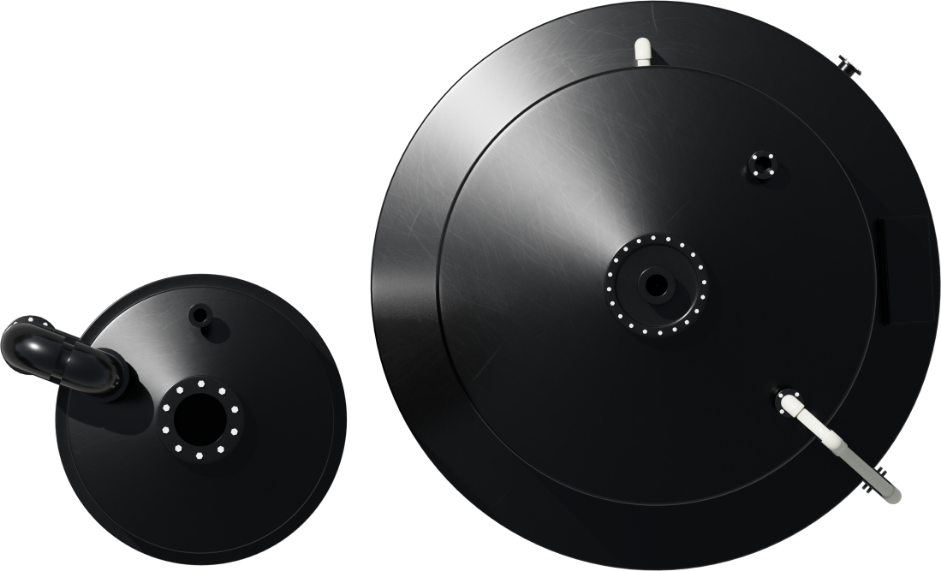NIPLAST®️ fume scrubbers offer exceptional performance in effectively eliminating particulates from gas streams. These scrubbers play a vital role in removing contaminants by directing the gas stream through a packed structure, all conveniently housed within a robust NIPLAST® thermoplastic scrubber body.
They remove contaminants from the stream by passing it through a packed structure, with all stages contained within a NIPLAST® thermoplastic scrubber body. The pollutant is subsequently absorbed or balanced by the scrubbing liquor.
The mass transfer of pollutants from the gas into the recirculating liquor is achieved within Niplast® fume scrubbing towers, by creating the largest contact area possible.
Typical applications for NIPLAST® fume scrubbers include odour control, the removal of chemical fumes, dust controls and the control of chemical fumes during road tanker delivery.
The wet scrubbing of fumes is the process of removing liquid or solid particles from a gas stream by transferring them into a liquid. This liquid is often water or sodium hydroxide.
Within the thermoplastic scrubber body, the contaminated gas enters at the bottom of the scrubber via a large, flanged connection, then passes upwards through a packed bed and downward-flowing sprays of the scrubbing liquor. The pollutants in the contaminated gas are trapped and collected in the drops of the scrubbing liquor. Before the clean
gas leaves the scrubber, it passes again through a mist eliminator that captures any remaining droplets. The scrubbing liquor is then collected within the sump section of the NIPLAST® fume scrubber before chemical re-balancing or transfer to waste. The scrubbing liquor has by this stage absorbed the contaminants, and the scrubber then releases the clean gas.
Niplast is the industry leader, setting the benchmark for excellence in manufacturing plastic bulk storage tanks. A remarkable brand heritage spanning over 40 years, has established us as experts in our field.
Our long-standing history of successfully tackling chemical storage problems showcases our expertise and ingenuity. We have the experience and know-how to navigate the complexities of various industries and provide tailored solutions that go beyond expectations.
Fume scrubbers are an important piece of equipment used to remove dangerous fumes and particles from the air in industrial facilities. By extracting and filtering out hazardous contaminants, fume scrubbers ensure released pollutant levels are an absolute minimum.
While the terms “fume scrubber” and “gas scrubber” are sometimes used interchangeably, there is a reason these air filtration systems are also referred to as gas scrubbers. The primary function of scrubbers is to remove hazardous gaseous contaminants from process airstreams, for example a fuming stored chemical, to meet stringent pollutant levels..
Fumes generally refer to airborne particles and dusty vapours emitted from industrial activities like welding, smelting, and chemical processing. However, many processes also release harmful gases into the environment that require extraction. Examples include volatile organic compounds (VOCs) like paint solvents, dangerous gases like carbon monoxide or sulphur dioxide, and toxic lab chemicals. Gas scrubbers filter these gaseous emissions or pollutants to protect worker health.
These systems scrub or wash the gases from the air as it passes through water sprays, activated carbon, neutralizing agents, and other filtration media. The technology was originally developed to scrub acid gases in chemical plants, hence the name gas scrubbers. Today’s scrubbers are highly advanced and effective at capturing both fumes and gaseous components. By cleansing toxic vapours as well as particulate matter, fume scrubbers provide critical protection from the range of airborne hazards present in modern industrial settings.
Wet scrubbers are a type of air filtration system used to remove dust, fumes, and gases from industrial facilities. As the name suggests, these scrubbers utilise water to capture contaminants from air streams. By passing polluted air through water, wet scrubbers transfer hazardous materials from the gas phase into the liquid where they can be contained and safely disposed of.
There are various wet scrubber designs, but they generally work by spraying water droplets into the air stream. Contaminants collide with and become trapped in the water. Scrubbers may also contain beds of packed plastic media over which water flows. These provide more surface area for air pollutants to contact and transfer into the liquid. The water or washing liquid often contains dissolved alkaline agents to neutralise acidic gases.
After passing through the wet scrubber, clean air is discharged back into the atmosphere. The water containing concentrated pollutants is either treated on-site or shipped for waste disposal. Proper maintenance is critical to ensure efficiency and prevent harmful build-up in systems. When equipped with high-quality filtration media, wet scrubbers provide an effective method for capturing harmful dusts, fumes, and gases from industrial air streams.
Are you looking for a premium fume scrubbing solution, then look no further than us. Call us today to find out more about how our scrubbers can help you reduce air pollution or corrosive fumes from your industrial environment.
With over 40 years of brand heritage, Niplast are experts in manufacturing plastic bulk storage tanks to strict CEN standard BS EN 12573 and its forerunner DVS 2205.
Our long history of applying these standards innovatively to solve chemical storage problems our clients meet, is what sets us apart. Sometimes you need to think outside of the tank
Today, with over 40 years of brand heritage, Niplast is an expert in manufacturing plastic bulk storage tanks or industrial tanks to strict CEN standard BS EN 12573 and its forerunner DVS 2205.
Our long history of innovatively applying these standards to solve chemical storage problems sets us apart from other brands of underground water tanks and chemical storage solutions. Sometimes, you need to think outside of the tank!
Contact Us